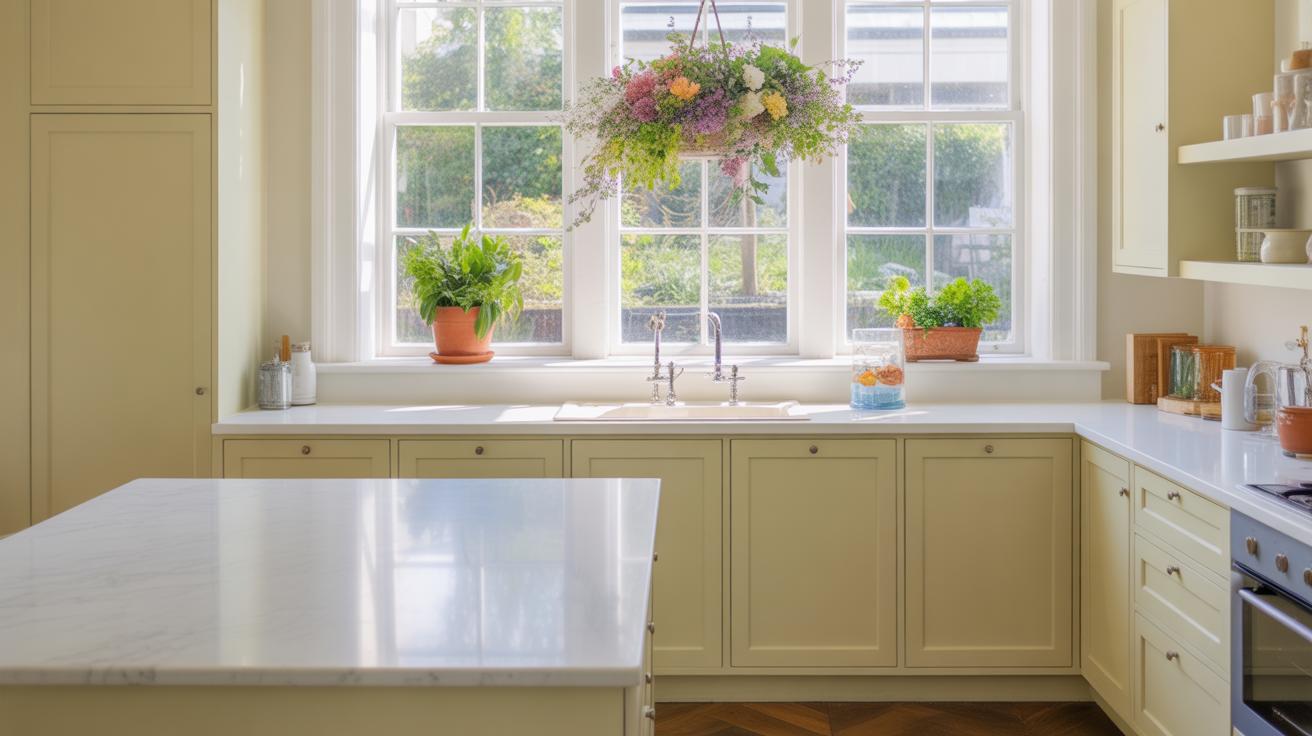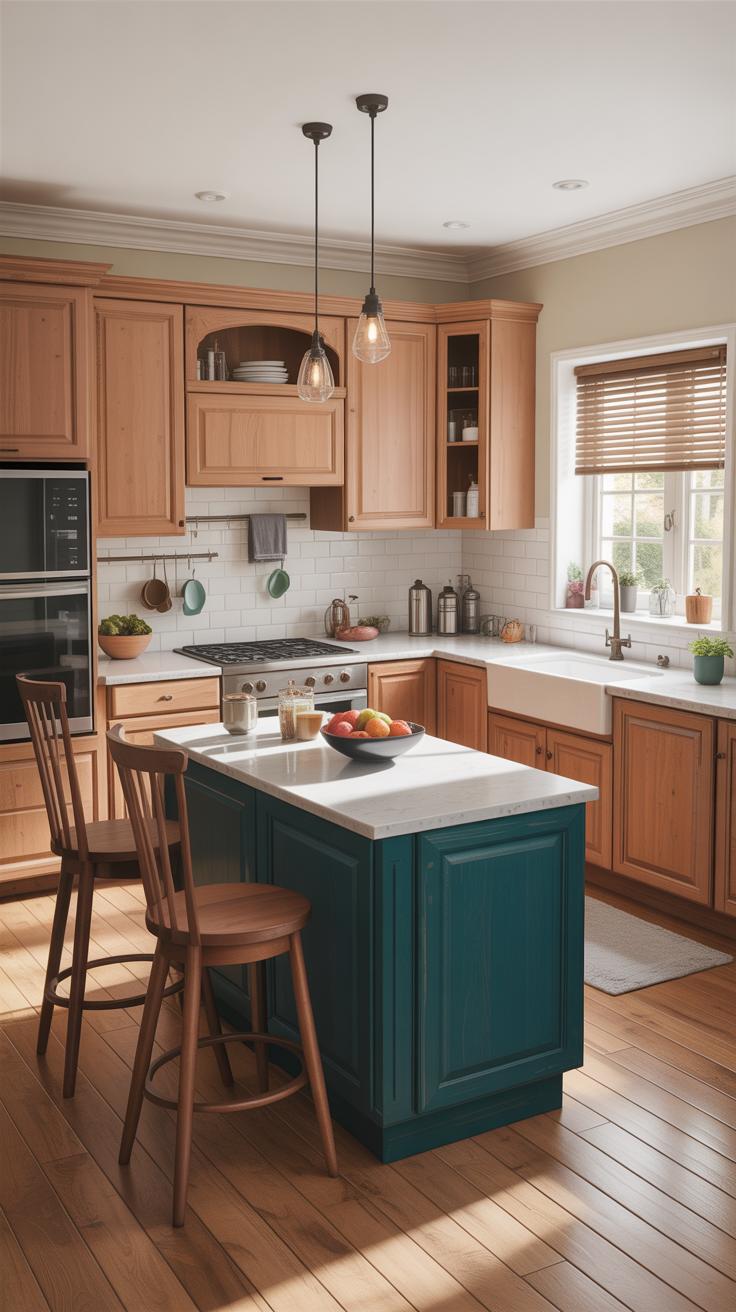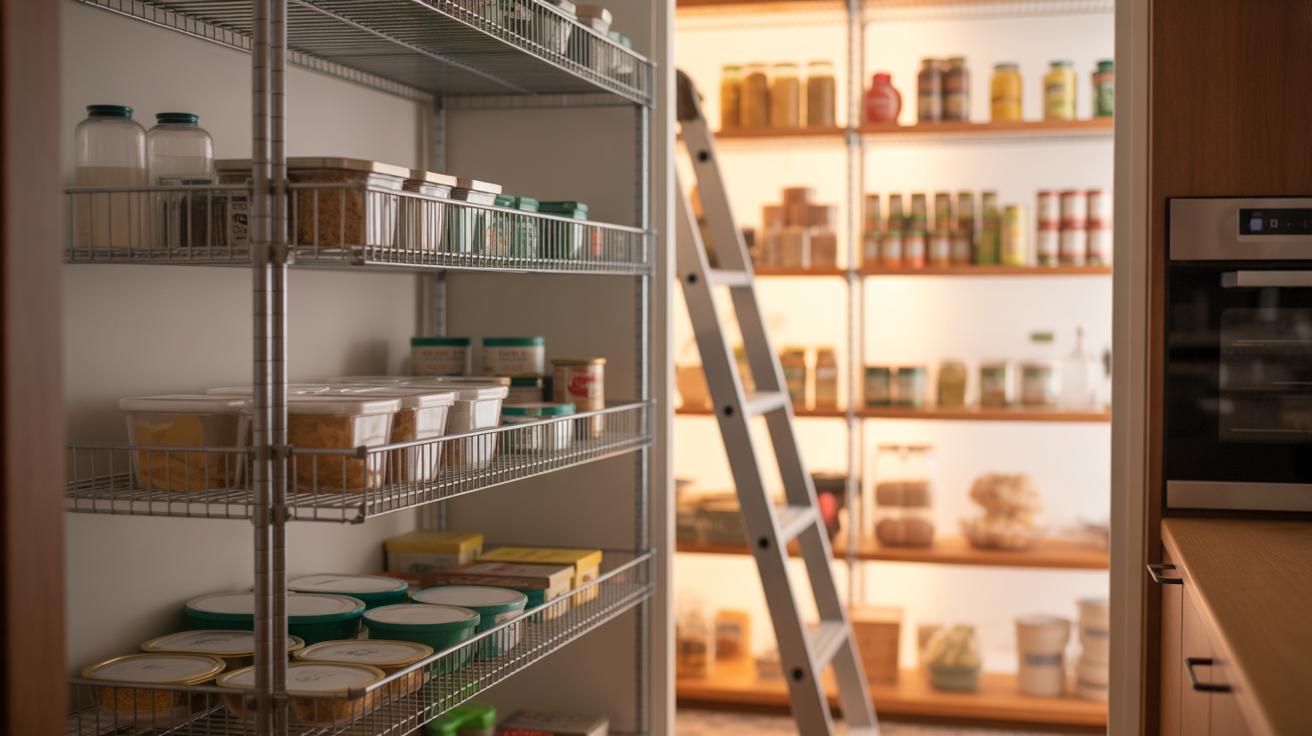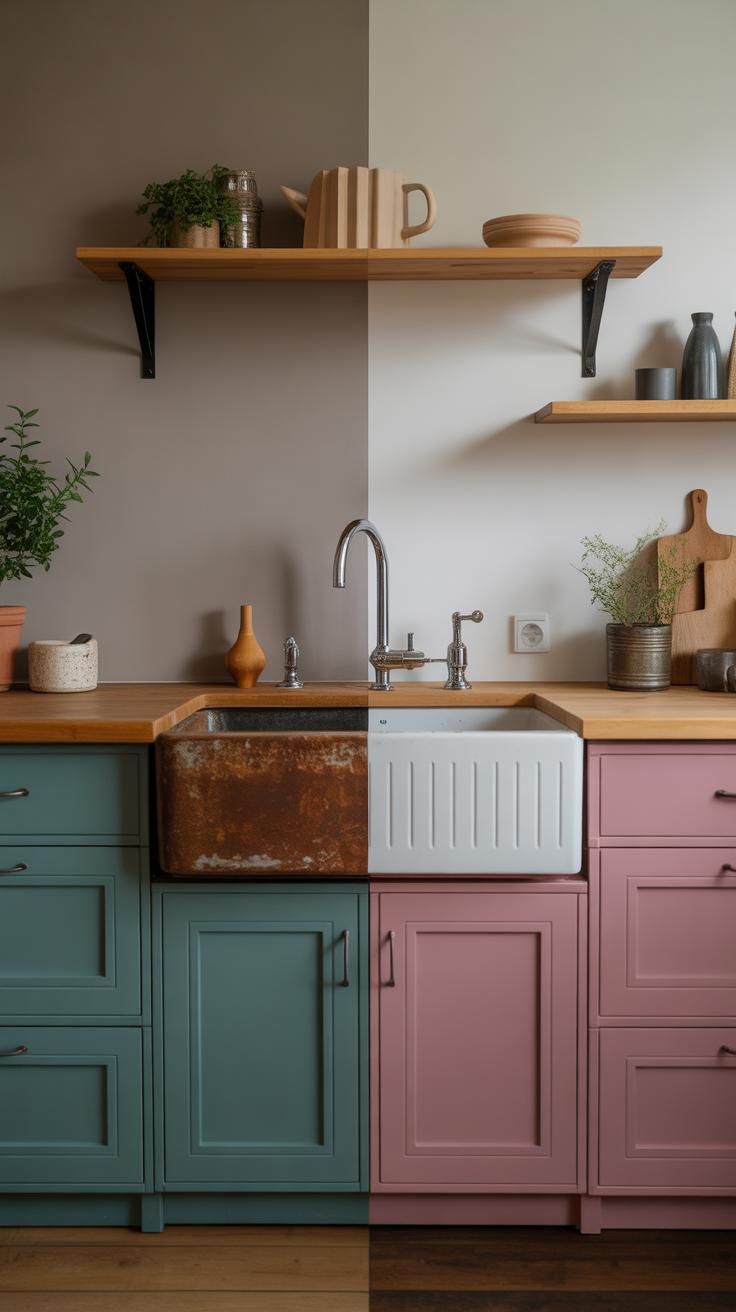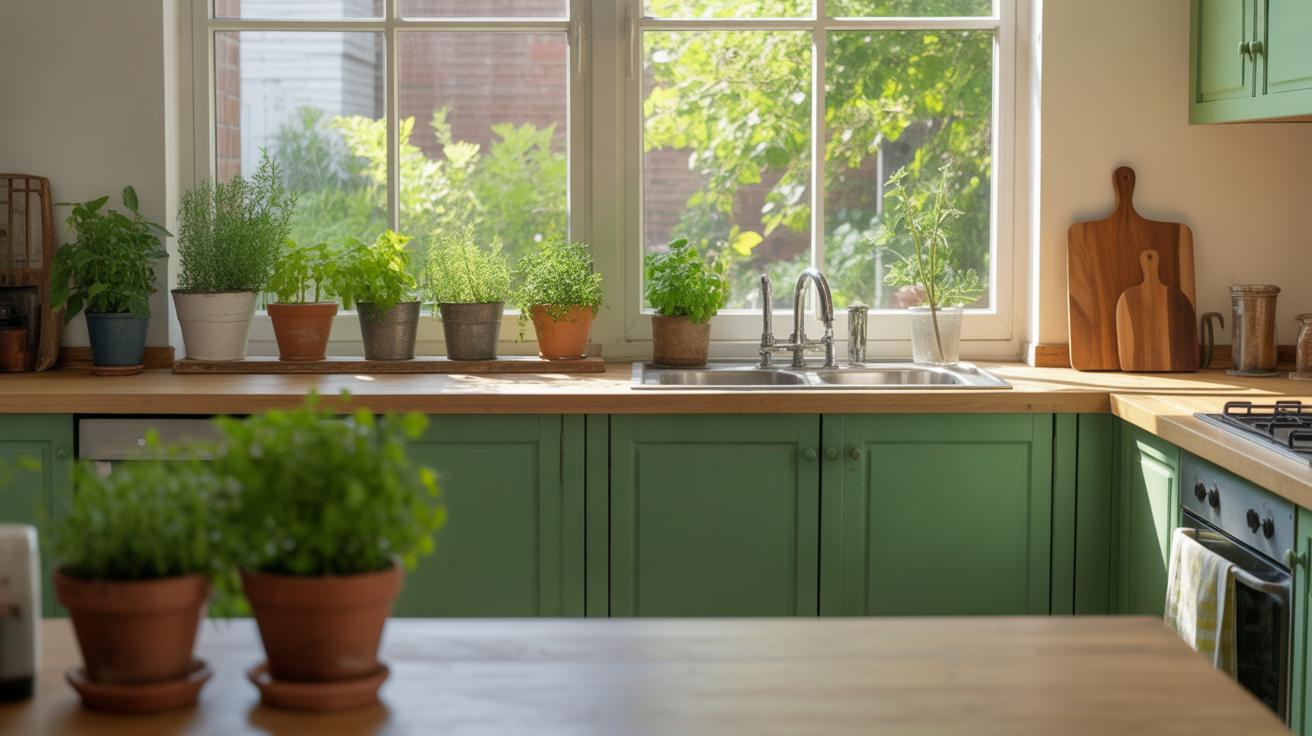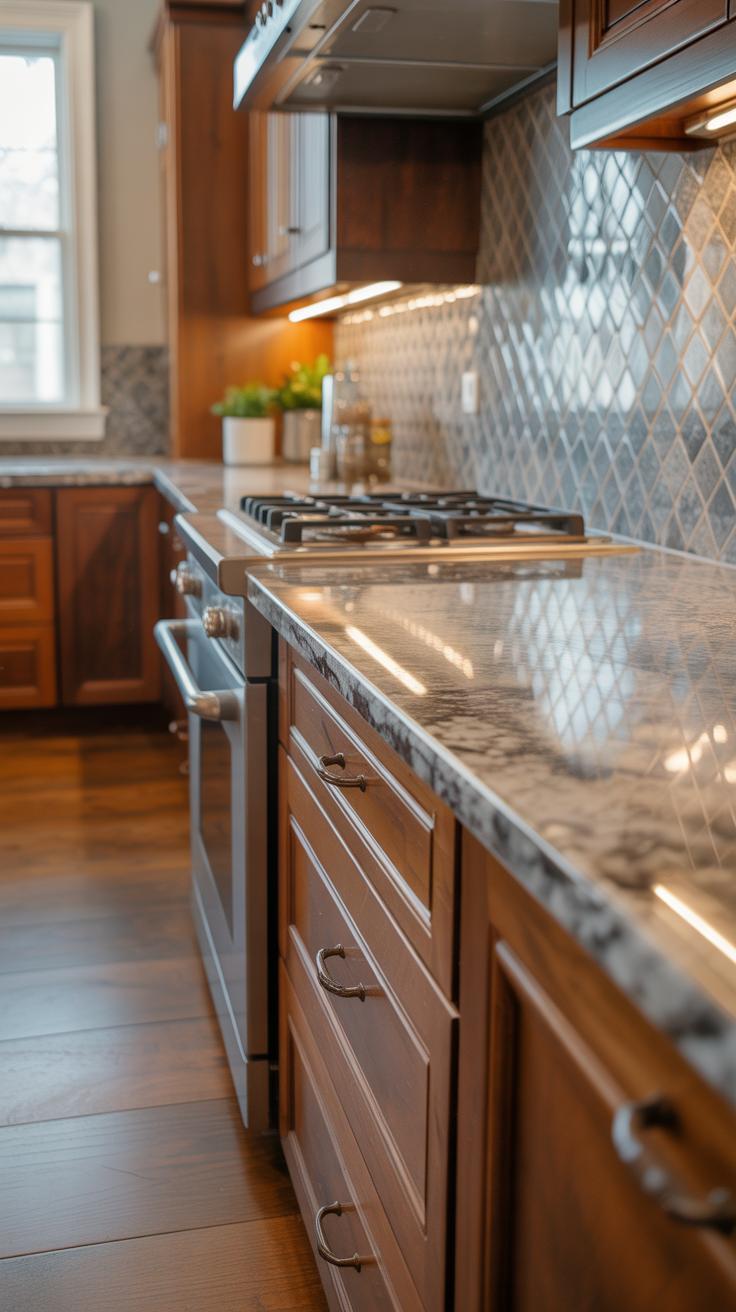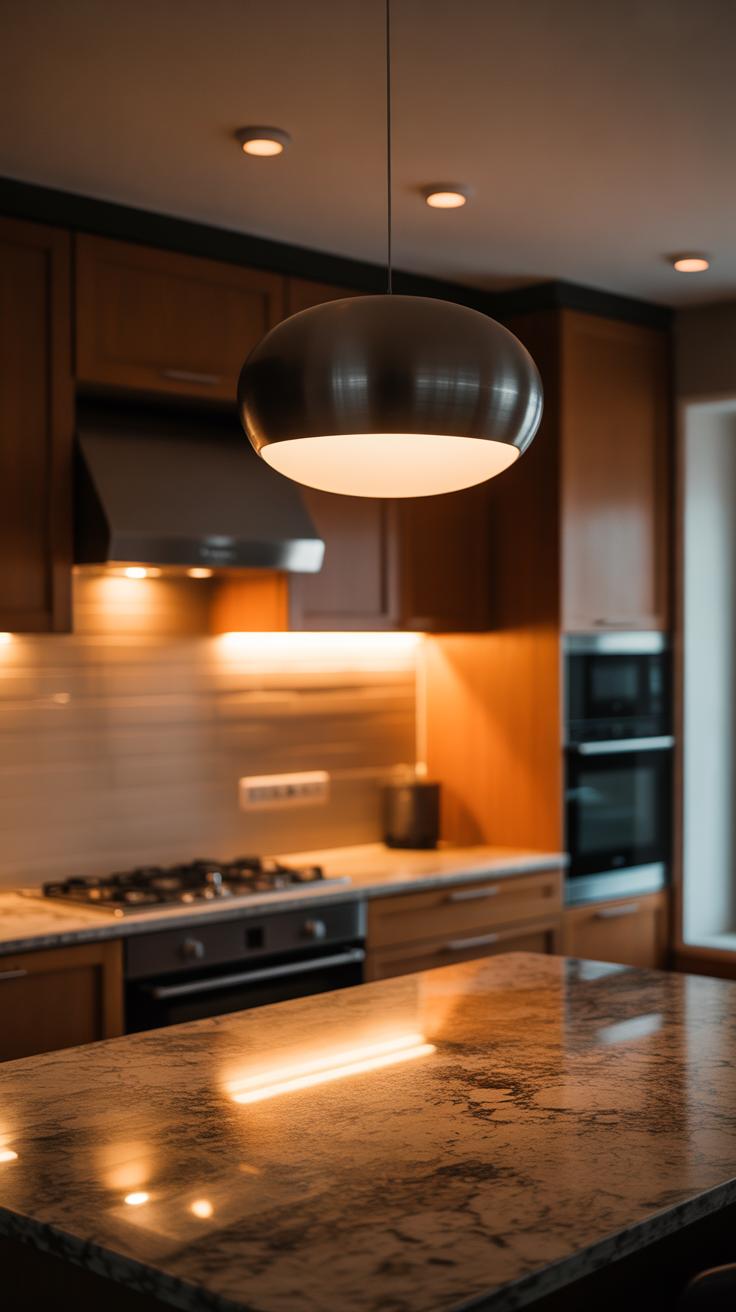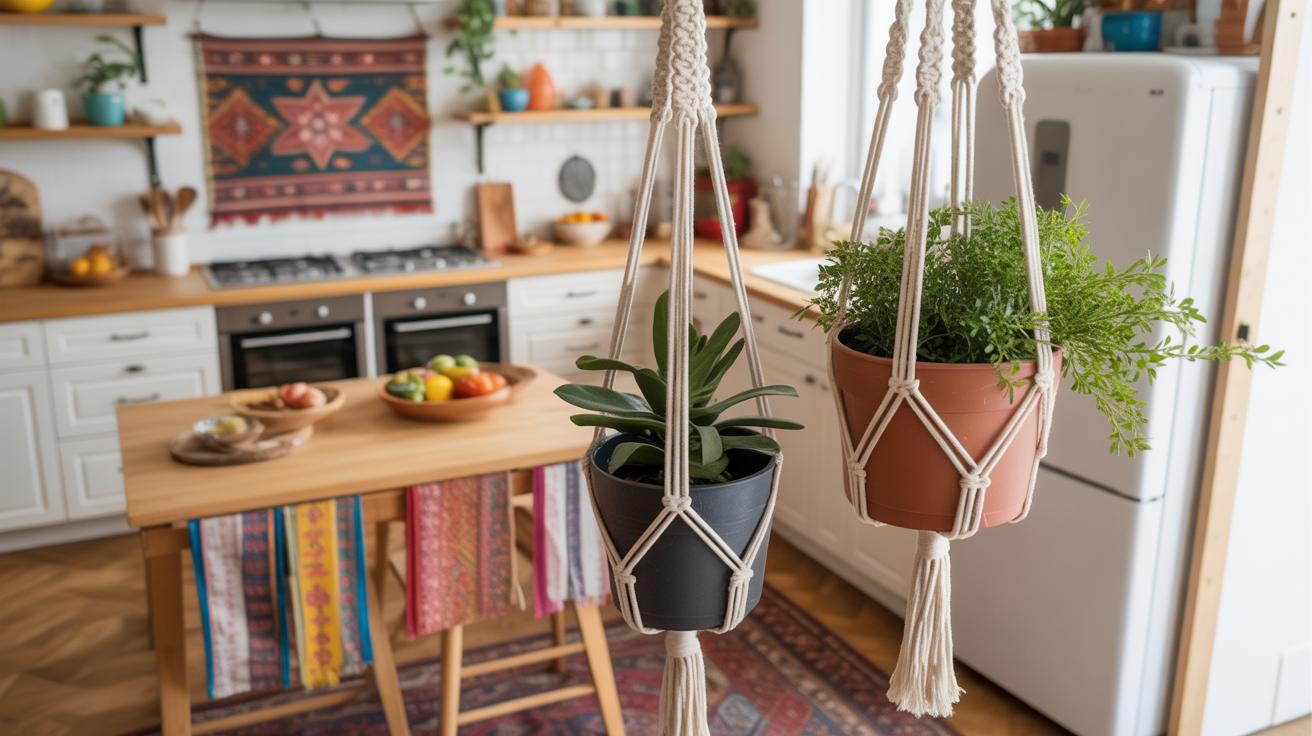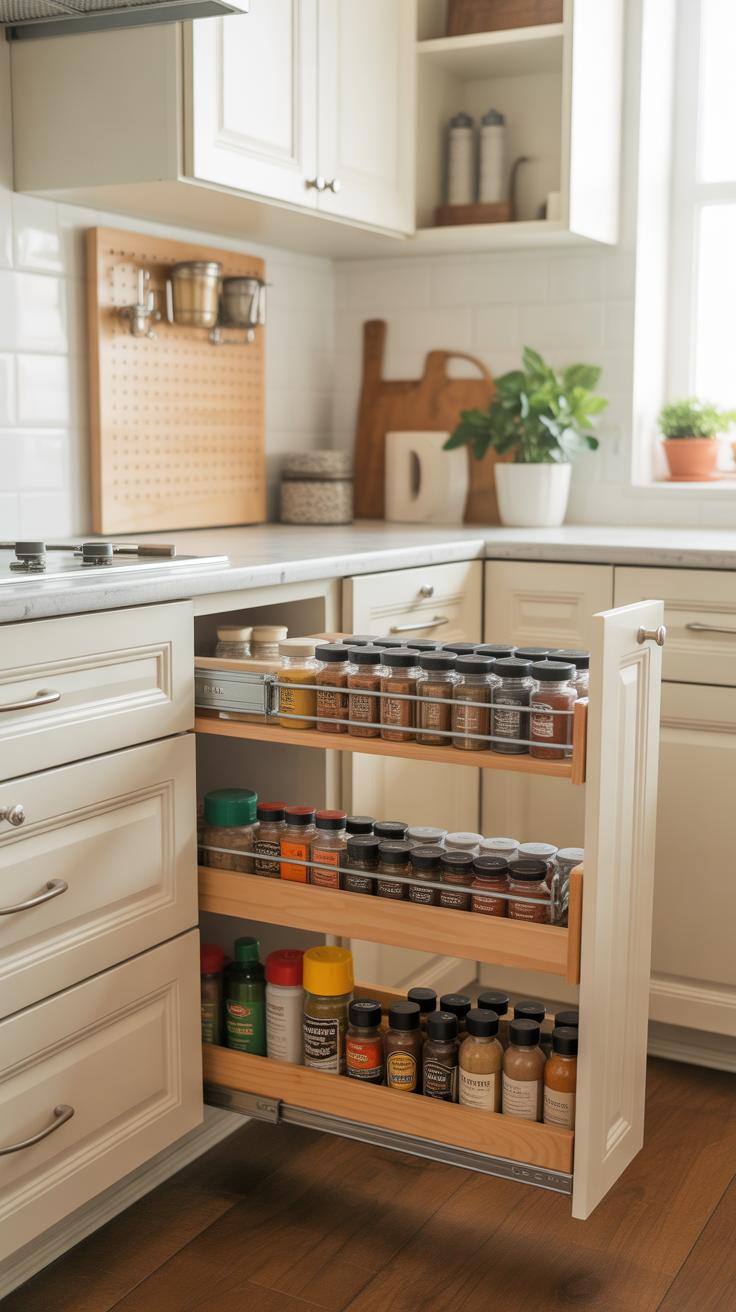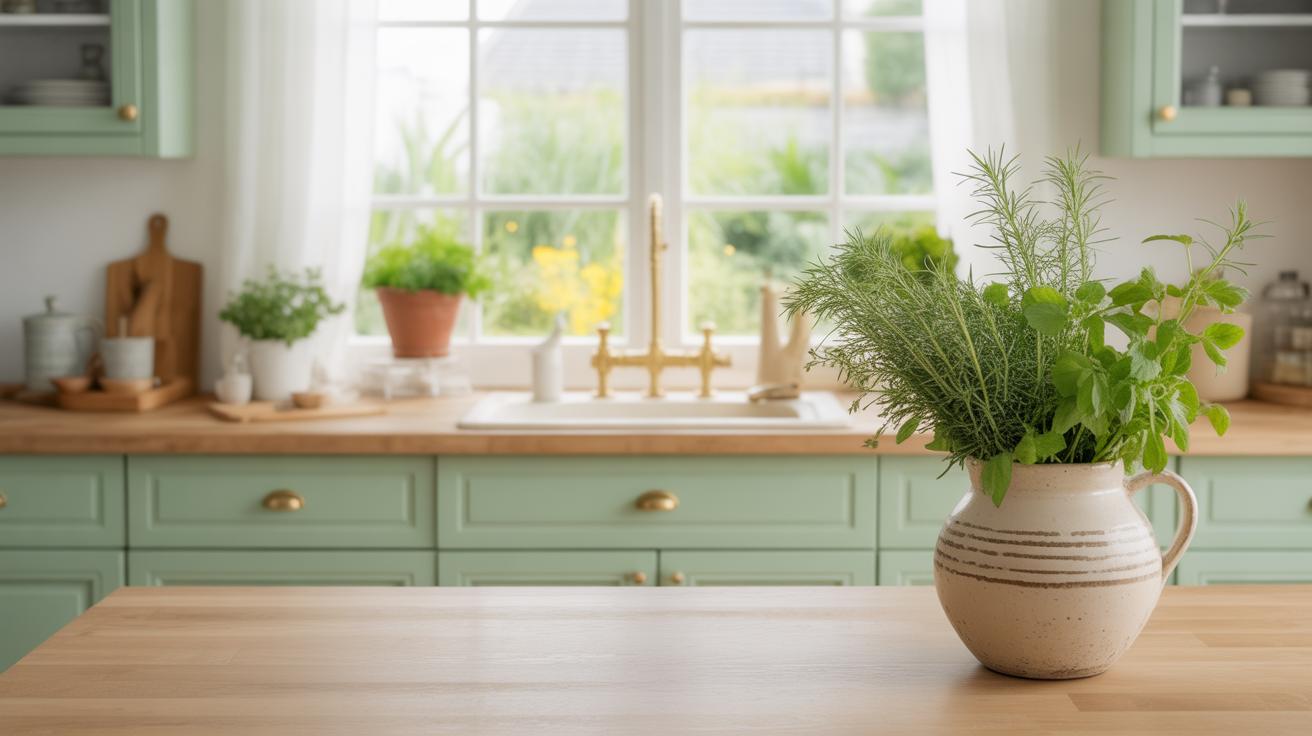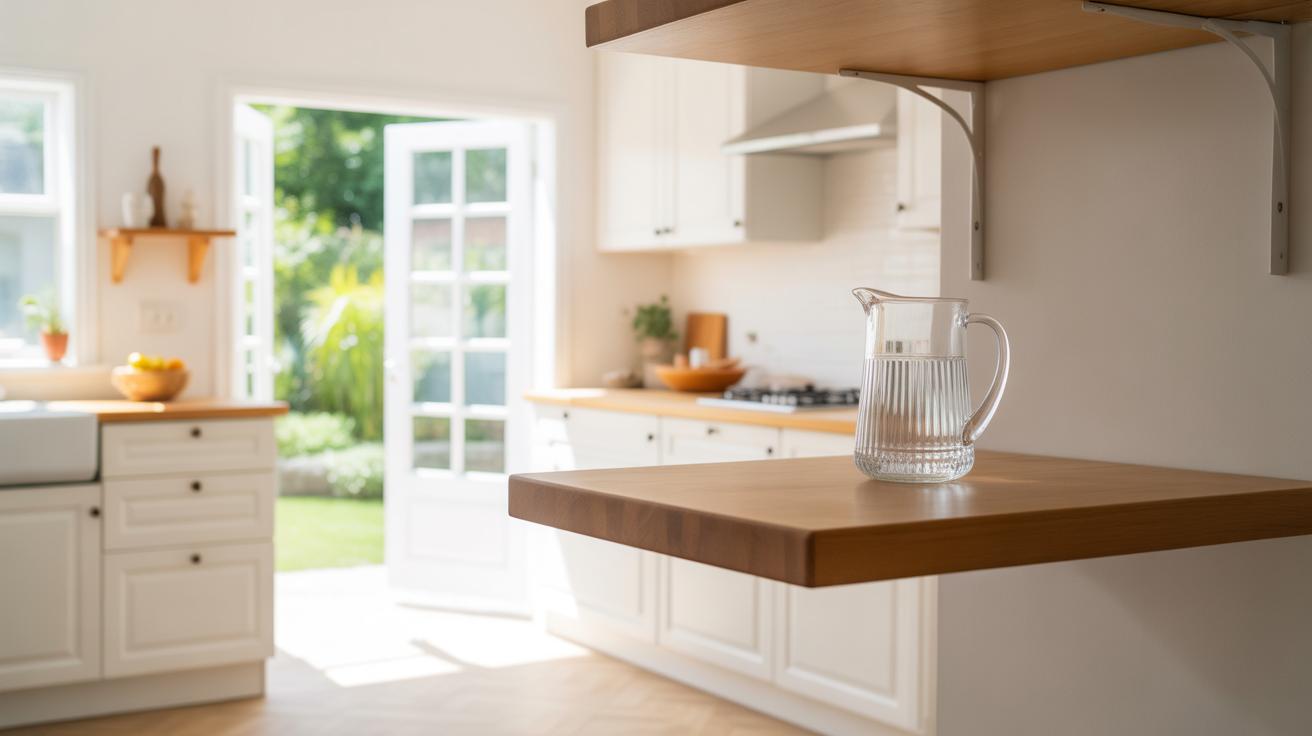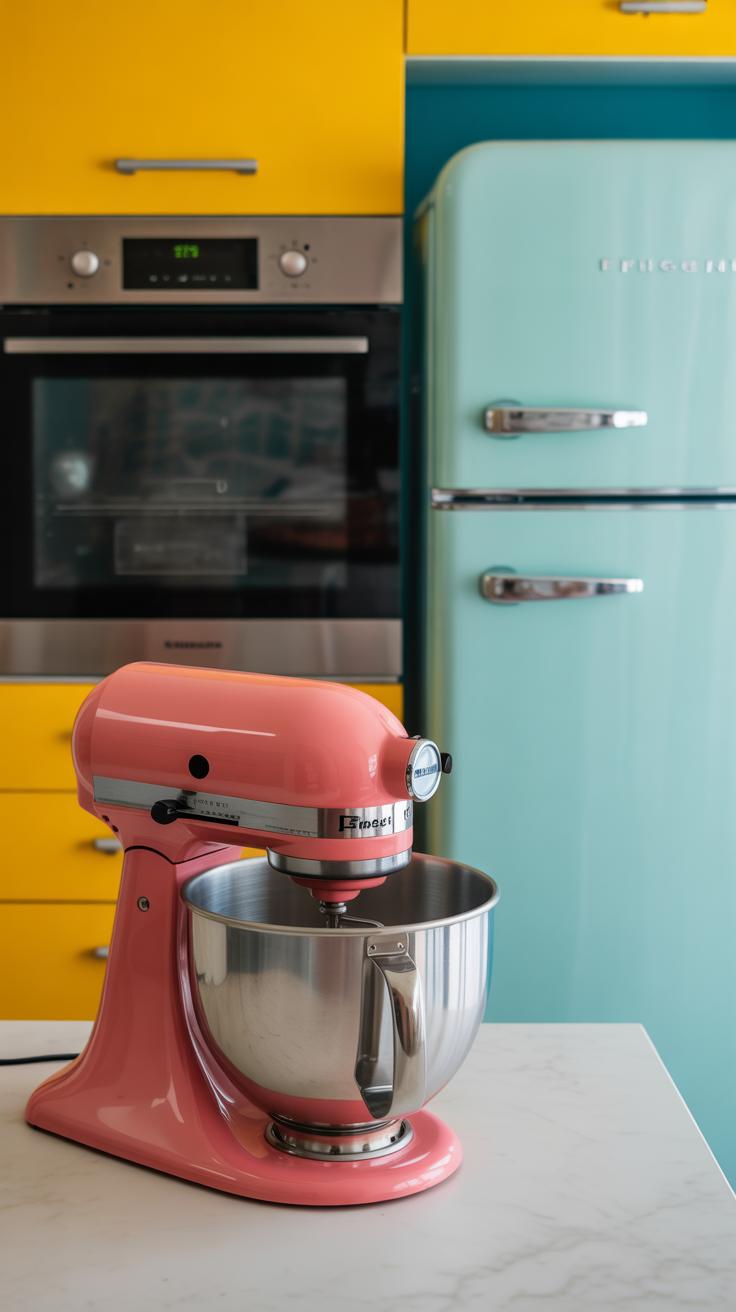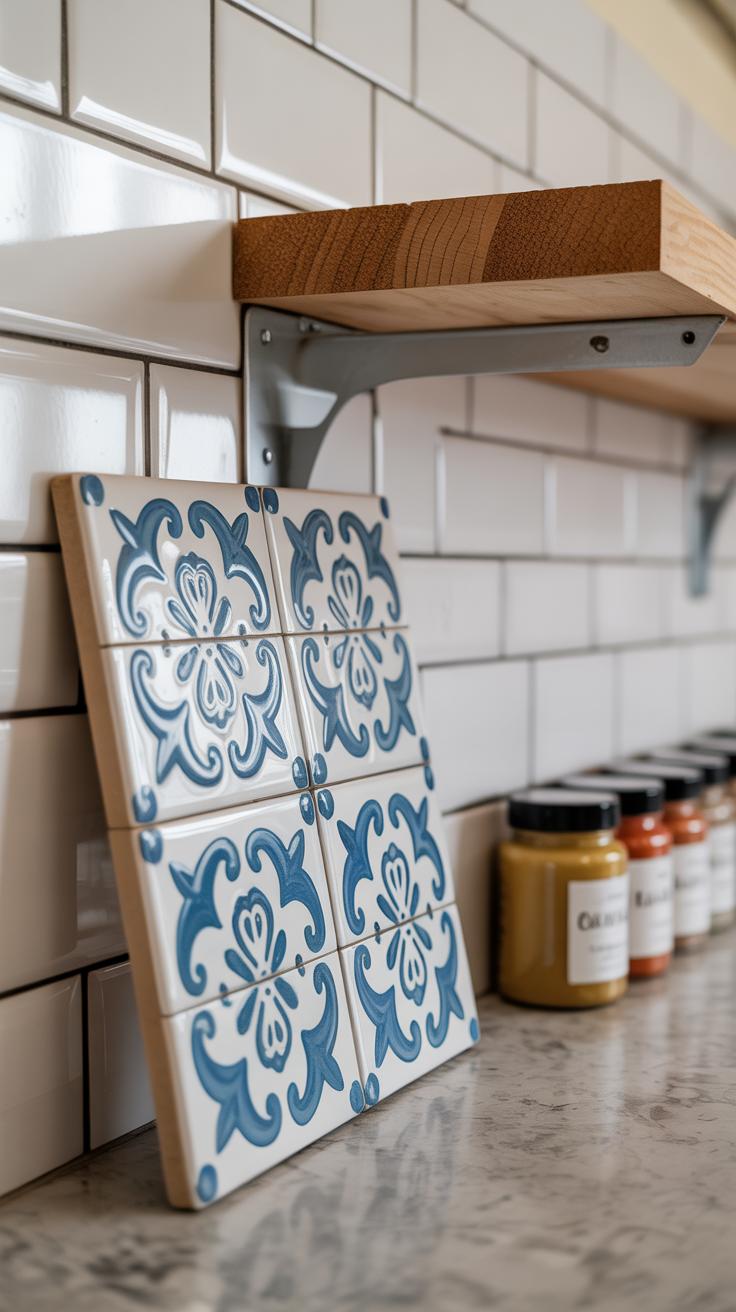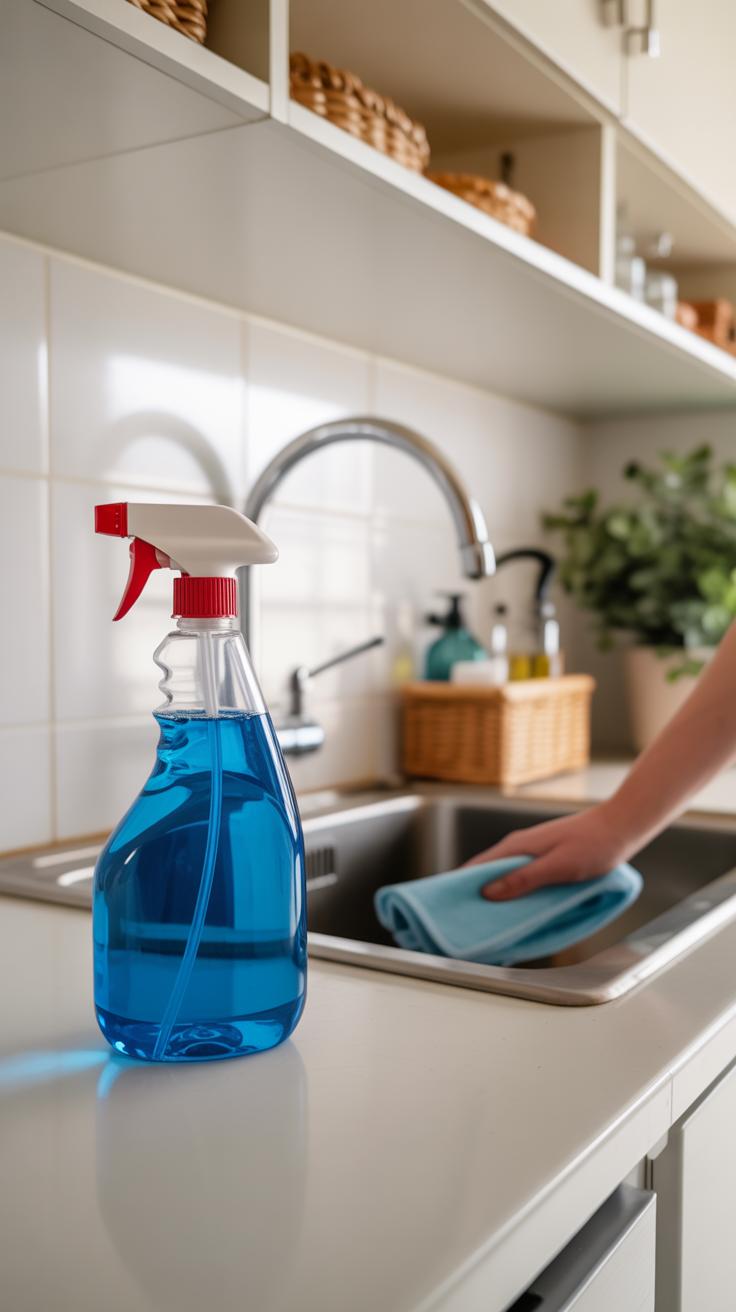Introduction
Beautiful kitchens serve as the heart of every home. They bring together practical use and personal style, making cooking and gathering more enjoyable. From modern setups to cozy rustic designs, there is a kitchen style for every taste and budget. You don’t need a large budget to create a space where you love to cook and spend time.
In this article, you will find ideas that inspire you to create beautiful kitchens. We cover many topics including choosing the right materials, layout tips, and budget-friendly decorating tricks. You will learn how to make your kitchen both attractive and functional. This guide will help you turn your kitchen into a space that suits your needs and reflects your personality.
Understanding Kitchen Basics And Layout
When you think about a kitchen, it’s easy to picture just a place with a stove, sink, and fridge. But there’s more to it than that. At its core, a kitchen has three basic elements: cooking, cleaning, and storage. These zones work together, but how they’re arranged can make all the difference in how comfortable and practical your kitchen feels.
Good layout isn’t just some fancy design term—it really affects how you move and work in your space. If your kitchen is cramped or awkward, even the best appliances won’t help. To keep things running smoothly, designers often talk about the kitchen work triangle. This concept links your stove, sink, and refrigerator in a way that cuts down unnecessary steps.
Think about when you’re making dinner. You might grab something from the fridge, chop it next to the sink, then cook it on the stove. If these points are all spread out or blocked, it slows you down. But a well-planned layout lets you glide through these tasks almost without thinking. While the work triangle isn’t the only way to plan a kitchen, it offers a simple rule to keep your cooking space practical and enjoyable.
Kitchen Zones And How They Work
A kitchen isn’t just one big area; it’s made up of various zones that each serve a purpose. You have your cooking area—where the stove or cooktop lives—and your prep counters, usually nearby, providing space to chop or mix.
Then there’s storage: cabinets, pantry, and drawers that hold everything from pots to snacks. Cleaning zones—like the sink and dishwasher—deal with messes and dishes. Ideally, these areas should flow into one another without too much back-and-forth.
Picture your kitchen like a workspace where everything has its place. If your storage is too far from prep counters, you waste time walking back and forth. If the sink is tucked away from the stove, washing and cooking become cumbersome. A simple layout tweak here or there can ease movement and save you effort, especially in smaller kitchens where space is tight.
Planning The Kitchen Work Triangle
The kitchen work triangle involves connecting three key points: the stove, sink, and refrigerator. These form the central ‘triangle’ where most kitchen activity happens. When these points sit close—not too close but also not too far apart—it makes cooking faster and less tiring.
But what does “close” really mean? Designers suggest each leg of the triangle be between four and nine feet, so you don’t feel cramped or stretched out. If the triangle is too big, you waste steps; if it’s too small, the kitchen feels crowded and awkward.
Sometimes, the shape or size of your room limits how perfect your triangle can be. But aiming for this guideline helps. It’s a practical way to get you thinking about how your kitchen operates, not just how it looks. When these three points work well together, your kitchen can actually make cooking feel easier, maybe even a bit enjoyable.
Choosing Kitchen Styles To Match Your Home
Popular Kitchen Styles
There’s a surprising number of kitchen styles to choose from, each carrying its own look and feel. Modern kitchens tend to focus on clean lines, sleek surfaces, and minimalism. They fit well if you prefer a clutter-free space with a bit of an edge. Rustic kitchens bring in natural wood, warm tones, and a cozy vibe, often featuring exposed beams or stone accents. Traditional kitchens lean on classic cabinetry, rich woods, and more ornate details. Lastly, farmhouse kitchens mix vintage elements with practical layouts, often including open shelving and apron sinks.
Picking the right style depends a lot on your home’s overall design and what you feel comfortable with. If you live in a newer build, modern might feel natural, but if you own an older home, rustic or traditional could resonate better. Sometimes people like to blend styles—maybe rustic cabinets with modern countertops—but that can be tricky if you’re not careful.
Matching Styles To Your Home’s Look
Matching your kitchen to your home’s architecture makes a big difference. Imagine pairing a stark, ultra-modern kitchen with a Victorian house—it can feel out of place. Generally, modern kitchens suit contemporary homes with straight lines and open spaces. Meanwhile, a rustic or farmhouse kitchen is more at home in a cottage or farmhouse-style house with lots of character.
Older houses often have details you can highlight by choosing traditional cabinetry, while modular or minimalist kitchens complement newer constructions. It’s almost like the kitchen should feel like a natural extension, not a sudden contrast. But then again, some enjoy the contrast, turning the kitchen into a statement piece—so it’s really about what appeals to you.
Adding Personal Touches To Your Style
Once you settle on a style, making it yours brings life to the space. Colors can shift a style dramatically. For example, a farmhouse style with bold, unexpected tile colors or quirky light fixtures adds personality. Accessories like vintage utensils, art, or even a unique backsplash tell your story. Small details, like a funky cabinet knob or a colorful rug, can make a kitchen feel less cookie-cutter.
Don’t overlook the power of mixing textures or including an inherited piece—a wooden cutting board or an old sign. It’s those small touches that make the kitchen more than just a work area; it becomes a reflection of your taste. You might not want to overdo it, but a bit of personality goes a long way.
Picking Materials That Look Good And Last
Materials For Cabinets And Surfaces
Choosing materials for your kitchen cabinets and countertops feels like a balancing act between style, budget, and how they’ll hold up over time. Wood cabinets, for instance, are classic and can bring warmth, but they might show wear faster in busy kitchens. Solid wood is beautiful but can get pricey. Then there’s laminate, which often surprises people—it’s affordable and comes in tons of colors, yet it doesn’t offer the same texture or warmth as wood. You might find it looks fine for a while but can chip or peel if not treated carefully.
Countertop options often include stone like granite or quartz, which feels durable and upscale. I’ve seen quartz resist stains better than granite, but some people prefer the natural look of stone, even if it requires more maintenance. On the flip side, laminate countertops are budget-friendly but less resistant to heat and scratches. It’s tough sometimes, because what fits your style might not always suit your cooking habits or budget perfectly.
Flooring Options For Your Kitchen
When it comes to kitchen flooring, there’s wood, tile, vinyl—each with its quirks. Wood floors add warmth and charm but can get scratched or stained. You might hesitate if spills happen often because water can warp the wood if not cleaned up quickly. Tile is usually waterproof and easy to mop, but it feels cold underfoot and can crack if something heavy falls. Vinyl flooring is softer and handles spills well, plus it’s often cheaper, yet it may not last as long or feel as ‘real’ as wood or tile.
Cleaning these floors also varies. Tiles need grout maintenance, which some avoid. Wood floors call for special cleaners to keep their finish. Vinyl is the easiest to clean, but its appearance might fade with time. You have to think about how your family uses the space; sometimes what looks good isn’t the most practical. So, it’s a bit of a trade-off, maybe even figuring out which compromises you’re willing to live with every day.
Lighting Your Kitchen For Work And Ambience
Task Lighting For Cooking Spaces
Good task lighting makes a big difference in the kitchen. When you’re chopping vegetables or checking food on the stove, having bright, focused light right above those work areas prevents mistakes. I’ve noticed that kitchens without direct lighting on counters feel a bit unsafe—shadows can easily hide sharp knives or spills.
Some practical ideas include installing LED strips under cabinets or focused downlights over the stove and prep zones. These lights cut through shadows and help your eyes adjust quickly, which is especially useful if you’re working early in the morning or late at night. Bright but not glaring—finding that balance takes trial, but it’s worth it.
Creating Atmosphere With Ambient Lighting
Ambient lighting sets the overall mood in your kitchen, making it more inviting beyond just the practical side. Ceiling lights work well for general illumination, though sometimes their brightness feels harsh. That’s where dimmable pendant lamps can soften the space or create cozy corners.
Under-cabinet lights can pull double duty: they offer some task light but also add warmth and depth to the room. I think combining different layers of light lets you shift the feel—from lively and bright during cooking to relaxed and subtle when dining or chatting.
Balancing these lights means not relying heavily on one source. Bright overhead lamps might overwhelm, while too much soft light can leave your workspace dim. Experiment with switches or smart controls if you can, so adjusting the vibe as needed becomes second nature.
Storage Solutions That Save Space And Time
Smart storage keeps your kitchen functional without feeling cluttered—and that’s no small feat, especially if your kitchen isn’t large. Cabinets with pull-out shelves bring everything closer. You don’t have to crouch or dig through piles. Lazy Susans in corner cabinets make awkward spaces useful, turning what feels like a dead zone into a handy spot.
Drawers often get overlooked. Divider inserts can tame the chaos of utensils, lids, or baking sheets. They keep things neat, but also make you think twice before dumping everything in one place again.
Using Cabinets And Drawers Efficiently
Try grouping items by use—for example, everyday dishes near the dishwasher, or pots close to the stove. Pull-out trays mean you see what’s inside without moving everything. I once switched to full-extension drawer slides, and suddenly reaching the back wasn’t a guessing game anymore. Small bins help corral like with like, preventing that “everything dumped everywhere” syndrome. It might feel like extra effort upfront, but it pays off when cooking is smoother and clean-up faster.
Open Shelving And Other Storage Ideas
Open shelves are tricky. They demand upkeep but can make a kitchen feel airier and more inviting. Display favorite mugs or colorful bowls, but don’t overcrowd. Wall racks for knives or spices put often-used items right where you need them. Pegboards offer surprising flexibility—adjust hooks as you swap out tools or gadgets. Even magnetic strips for knives or metal containers for utensils save drawer space. Sometimes, storage solutions can double as décor. Just keep in mind—if you prefer a tidier look, open shelving might feel like an ongoing chore.
BudgetFriendly Kitchen Upgrades That Look Great
Refreshing your kitchen doesn’t mean you need to empty your wallet. Simple changes can bring a whole new feel without the stress of a big renovation. For example, painting cabinets yourself can breathe life into tired wood or outdated colors. It’s surprising how just a fresh coat of paint can make an old kitchen feel modern again. You might want to try lighter shades—they tend to open up the space more than darker ones, though I know some prefer a bold color to make a statement.
Swapping out cabinet hardware is another easy fix. New knobs and pulls cost very little but add a layer of polish that often goes unnoticed—until it’s missing. If you feel a little adventurous, mixing metals can add character, but keep it subtle to avoid a cluttered look.
Lighting also plays a huge role. Sometimes replacing dated fixtures with simple pendant lights or even LED strips under cabinets offers a noticeable difference. These aren’t usually expensive, yet they make the space feel brighter and more inviting.
Finally, think about small accessories: new dish racks, a stylish rug, or decorative jars for storage all freshen up the vibe. These details might seem minor but can tie the whole room together.
Affordable Changes With Big Impact
Some projects offer a quick turnaround with little hassle. Painting is perhaps the single best step—doors, even the walls if needed. It requires a bit of patience but costs mainly just paint and supplies. New knobs and pulls can be found for just a few dollars each, and they immediately update the kitchen’s style without any construction.
Consider adding a peel-and-stick backsplash. These are surprisingly durable for their price and often simple to apply yourself. Patterns range from classic subway tile looks to geometric designs, so you can find something to match your taste. It’s a project you can start and finish in a weekend.
Smart Shopping For Kitchen Materials
Budget doesn’t have to mean settling for low quality. Searching sales, clearance sections, or outlet stores often leads to good deals on fixtures and hardware. Don’t shy away from slightly imperfect items either; sometimes a small scratch won’t show once installed!
Online marketplaces can offer competitive prices but remember to read reviews carefully—something cheap might not last long. If you’re unsure, local home improvement stores often let you inspect samples beforehand.
Buying in bulk or sets can reduce costs on knobs or tiles. Sometimes mixing a few higher-end pieces with budget items helps balance durability and style without overspending. Would you rather spend more on the faucet or the lighting? Prioritizing matters because every kitchen’s needs differ.
Sustainable Choices For An EcoFriendly Kitchen
Choosing materials that have a lighter impact on the planet can feel overwhelming at first, but some options stand out clearly. Bamboo, for example, grows quickly and can be harvested without causing lasting damage. It’s a great alternative for cabinets or flooring—durable yet renewable. Reclaimed wood brings character and history into your kitchen while keeping wood out of landfills. I once put together a small reclaimed wood backsplash, and the look was unexpectedly warm and inviting. Don’t overlook recycled glass countertops, either; they add color and personality while reusing waste glass.
When selecting appliances, look for those with energy-saving certifications. These models cut down on electricity use, which lowers your bills over time. LED bulbs, in particular, use far less power and last longer than traditional bulbs. Swapping out old light fixtures for LED options can save both energy and the hassle of frequent replacements. If you cook often, it’s tempting to think newer appliances cost more upfront—and yeah, sometimes they do—but the payoff in savings and environmental goodwill makes it worth considering.
Waste reduction is another area that can slip under the radar. Planning for compost bins or built-in recycling stations encourages sorting and keeps materials out of trash. Even small things like choosing packaging-free or bulk food items reduce what you throw away. Kitchen drawers and cabinets can be organized to make waste separation easy, helping you stick with eco-friendly habits that might otherwise feel inconvenient.
Blending Style And Function In Kitchen Appliances
Choosing Appliances That Fit Your Space
Picking appliances that truly fit your kitchen isn’t just about measurements, though that’s obviously important. Think about how your space functions daily. A large double oven might look impressive but could overwhelm a small kitchen and limit movement. On the other hand, compact or built-in appliances can save precious counter space without sacrificing much in cooking power.
Ever thought about a microwave drawer? It’s a clever way to keep surfaces clear and maintain a sleek look. Or slimline refrigerators that tuck neatly into cabinetry? These options show that size and placement shape not only the room’s feel but how easily you cook and clean.
Matching appliance styles with your kitchen’s overall vibe plays a role too. A minimalist kitchen might call for stainless steel or matte black finishes, while a farmhouse space could lean toward retro colors or classic white. Sometimes, mixing styles works — but only if it doesn’t confuse your eye when you’re rushing around.
Balancing Look And Performance
Choosing appliances is often a tug-of-war between aesthetic appeal and real, day-to-day usefulness. Yes, sleek designs are nice to look at, but will the stove’s knobs be easy to use? Does the refrigerator’s layout make grabbing things quick, or will you find yourself digging for ages?
Features matter, maybe more than most people realize. Self-cleaning ovens might seem like a luxury, but they can save hours. Induction cooktops heat quickly and precisely, yet they demand compatible cookware. Ask yourself which features genuinely fit your cooking habits instead of just grabbing what looks trendy.
Sometimes, the highest-tech appliance can clash with simpler kitchen styles. It’s tricky but worth finding that middle ground — appliances that complement your design but aren’t too complicated or bulky. After all, your kitchen should feel inviting, not like a showroom or a gadget laboratory.
DIY Projects To Personalize Your Kitchen
Taking on do-it-yourself projects can breathe personality into your kitchen without blowing your budget. Painting one wall a fresh color instantly changes the room’s vibe. It doesn’t have to be a complicated shade—a soft blue or warm beige can add just enough contrast to lift the space. Some folks even try chalkboard paint for a spot to jot down grocery lists or recipes, which always feels a bit fun and practical.
Creating your own backsplash is another way to add style with some effort. Simple peel-and-stick tiles come in many patterns and textures, making the process almost mess-free. If you want a personal touch, arranging painted tiles or using stencils can produce unique results. It may sound tricky, but it can be a weekend project that feels worth the effort.
Small details also make a difference. Swapping outdated cabinet handles for sleek, modern ones or vintage knobs changes the kitchen’s tone more than you might guess. For storage, crafting containers from repurposed jars or boxes not only organizes but adds character. It’s these little touches that say the kitchen belongs to you.
Art and decor personalize the space further. Hanging a piece of artwork—maybe a print of a recipe or a vibrant food photo—brings warmth. Plants, even a few herbs in pots, brighten the room and make it feel cared for. Colorful accessories, like patterned towels or a bold rug, invite a welcoming atmosphere. It’s odd how these touches can turn a functional space into one that’s somehow more alive.
Maintaining Your Kitchen To Keep It Beautiful
Keeping your kitchen looking fresh isn’t just about the big projects or the initial style choice. It’s really the small, consistent acts that make a difference over time. Surfaces like countertops and floors need a gentle but steady touch. For example, wiping counters right after cooking not only keeps crumbs away but also stops stains before they set in. I find that using a mild, non-abrasive cleaner works better than harsh chemicals—which can dull finishes, especially on wood or stone.
Floors tell a story of every meal prepared or spilled. Sweeping often and mopping with a cleaner fit for your floor type keeps dirt from settling. Maybe you noticed that grout lines darken quickly if overlooked. Organizing your kitchen items regularly prevents clutter and makes cleaning less of a chore. Imagine spending just a few minutes a day putting things back—you’ll likely avoid those overwhelming mess days.
Daily And Weekly Cleaning Tips
Simple routines really add up over time. Each day, wipe down counters and stovetops. Crumbs and splashes can become stubborn if left unattended. Keep a small caddy nearby with a cloth and cleaner for quick access—you might find it less bothersome that way. Floors usually need a sweep or vacuum several times weekly, especially if you cook a lot.
Take a moment weekly to check your fridge and pantry for expired items. Staying on top of organization stops mess build-up and lessens stress. If your dishwasher or sink area feels cluttered, clear it out regularly. Sometimes, less stuff means less cleaning. Do you notice your kitchen feels fresher when there’s minimal clutter? I do.
Long-Term Care For Kitchen Fixtures
Caring for cabinets, countertops, and appliances is about protecting your investment—and frankly, your sanity. Wood cabinets benefit from occasional polishing or oiling, which prevents drying and cracking. For painted or laminate surfaces, avoid abrasive scrubbing; gentle wiping is the way to go.
Countertops vary a lot, so consider their material when cleaning or repairing. Minor scratches in stone can sometimes be buffed out, while chips in laminate might need careful patching with kits you can find online.
Appliances also need love beyond the obvious surface clean. Check seals on your fridge and oven doors—they wear out and affect performance. And if a handle or hinge loosens, tightening screws early on can stop bigger problems later. These small maintenance steps might feel tedious, but they really help your kitchen look and work well for years.
Conclusions
Beautiful kitchens are possible for every home style and budget. By thinking about your needs, exploring different styles, and choosing the right materials, you can create a kitchen that works well for you. Small changes like updating cabinets, lighting, or paint can make a big difference without spending a lot.
Remember to plan your space for easy cooking and cleaning. Mixing style and function helps you enjoy your kitchen every day. Use the ideas shared here as a start to design a kitchen that fits your life and looks great. Your ideal kitchen awaits with a little effort and good planning.

